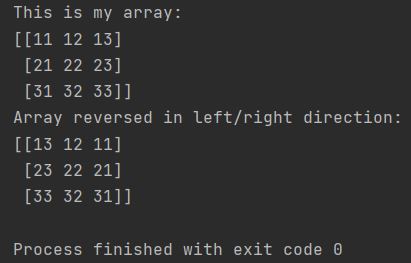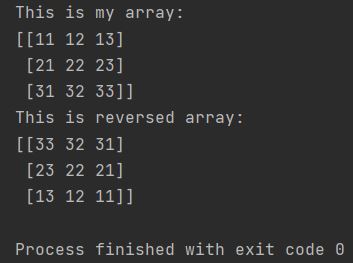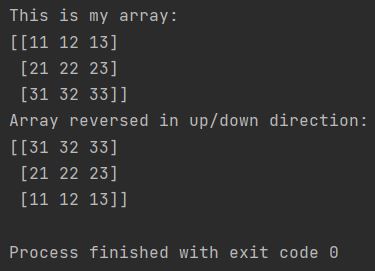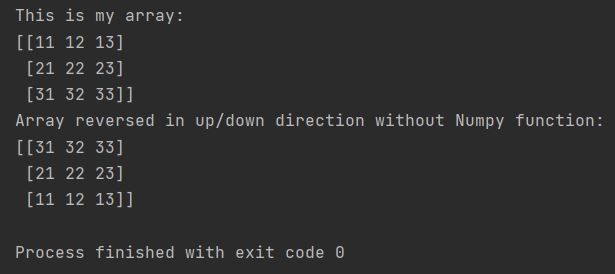Let’s learn how to reverse an array in the Numpy Python library. We will check a few methods and tricks.

Numpy Flip
The easiest way to reverse an array in Numpy is just to use the flip function.
import numpy as np
my_array = np.array([[11, 12, 13],
[21, 22, 23],
[31, 32, 33]])
print(f"This is my array: \n{my_array}")
reversed_array = np.flip(my_array)
print(f"This is reversed array: \n{reversed_array}")

The array just got reversed.
Numpy Flipud
However, there are other ways to reverse an array. To reverse an array in the up-down direction specifically, you can use the dedicated Numpy flipud function.
import numpy as np
my_array = np.array([[11, 12, 13],
[21, 22, 23],
[31, 32, 33]])
print(f"This is my array: \n{my_array}")
reverse_array_up_down = np.flipud(my_array)
print(f"Array reversed in up/down direction: \n{reverse_array_up_down}")

As shown, the array is reversed distinctly from the previous method by flipping in the up/down direction, offering utility in specific use cases.
[::-1]
With this simple Python trick, there is also the possibility to do the same without flipud.
import numpy as np
my_array = np.array([[11, 12, 13],
[21, 22, 23],
[31, 32, 33]])
print(f"This is my array: \n{my_array}")
flipped_array = my_array[::-1]
print(f"Array reversed in up/down direction without Numpy function: \n{flipped_array}")

The result is identical. Using my_array[::-1] effectively reverses the array in the up-down direction by creating a view, not a copy, of the array.
Numpy Fliplr
The same is possible in the left-to-right direction, of course. Fliplr is the name of a Numpy function.
import numpy as np
my_array = np.array([[11, 12, 13],
[21, 22, 23],
[31, 32, 33]])
print(f"This is my array: \n{my_array}")
flipped_array = np.fliplr(my_array)
print(f"Array reversed in left/right direction: \n{flipped_array}")

The array was flipped from left to right.
Knowing all of these methods, you can flip arrays according to your needs.
